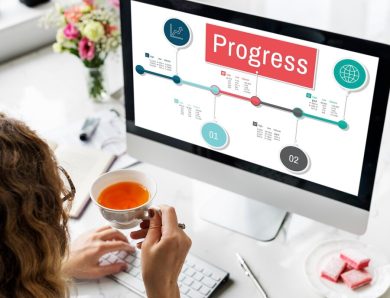
What Should You Look for in the Best IT Infrastructure Software?
In today’s rapidly evolving technological landscape, choosing the right IT infrastructure software is crucial for ensuring smooth and efficient operations. With so many options available, it can be overwhelming to determine which software will best meet your organization’s needs. This guide will help you understand the key factors to consider when selecting the best IT infrastructure software for your business.
1. Scalability
Why It Matters: As your organization grows, your IT infrastructure needs will expand. Scalable software can accommodate increased workloads and support new technologies without requiring a complete overhaul.
What to Look For:
- Modular Design: Allows you to add features or components as needed.
- Flexible Licensing: Offers options to scale up or down based on your usage.
- Performance Metrics: Ensures the software can handle growing data and user loads.
2. Integration Capabilities
Why It Matters: Your IT infrastructure software should seamlessly integrate with existing systems, applications, and databases to avoid disruptions and ensure smooth data flow.
What to Look For:
- API Support: Provides the ability to connect with other software and services.
- Compatibility: Works well with your current IT environment and tools.
- Data Migration Tools: Facilitates the transfer of data from legacy systems to new platforms.
3. Security Features
Why It Matters: With increasing cyber threats, robust security is essential to protect your data and infrastructure from breaches and attacks.
What to Look For:
- Encryption: Safeguards data during transmission and storage.
- Access Controls: Manages user permissions and restricts unauthorized access.
- Compliance: Adheres to industry standards and regulations such as GDPR or HIPAA.
4. User-Friendliness
Why It Matters: Intuitive software reduces the learning curve for your team, leading to faster implementation and fewer errors.
What to Look For:
- Intuitive Interface: Easy-to-navigate and user-friendly design.
- Customization Options: Allows you to tailor the software to fit your specific needs.
- Training and Support: Provides comprehensive resources and assistance for users.
5. Performance and Reliability
Why It Matters: High performance and reliability ensure that your IT infrastructure operates smoothly without unexpected downtime or performance issues.
What to Look For:
- Uptime Guarantees: Offers high availability and minimal downtime.
- Performance Monitoring: Includes tools to track and optimize system performance.
- Redundancy: Provides backup and failover options to maintain operations in case of failures.
6. Cost-Effectiveness
Why It Matters: Balancing cost with functionality is essential for staying within budget while still meeting your IT needs.
What to Look For:
- Transparent Pricing: Clear and detailed pricing models without hidden fees.
- Total Cost of Ownership: Considers initial costs, ongoing maintenance, and potential upgrade expenses.
- ROI: Evaluates the potential return on investment based on improved efficiency and performance.
7. Vendor Reputation and Support
Why It Matters: A reputable vendor with strong support can significantly impact your experience with the software, from implementation to ongoing maintenance.
What to Look For:
- Customer Reviews: Positive feedback from other users in your industry.
- Support Services: Access to responsive customer support and regular updates.
- Industry Experience: A vendor with a proven track record in IT infrastructure.
8. Customization and Flexibility
Why It Matters: Customizable software can be adapted to fit your unique requirements and workflows, enhancing its effectiveness.
What to Look For:
- Configurable Options: Allows adjustments to fit your specific use cases.
- Modular Components: Lets you select and integrate only the features you need.
- Adaptability: Supports changes in your IT environment and business processes.
9. Disaster Recovery and Backup
Why It Matters: Effective disaster recovery and backup solutions protect against data loss and ensure business continuity in case of unforeseen events.
What to Look For:
- Automated Backups: Regular and automated backup processes.
- Disaster Recovery Plan: Clearly defined procedures for recovering from failures.
- Data Restoration: Easy and efficient options for restoring lost or corrupted data.
Conclusion
Selecting the best IT infrastructure software requires careful consideration of several critical factors. By focusing on scalability, integration capabilities, security features, user-friendliness, performance, cost-effectiveness, vendor reputation, customization, and disaster recovery, you can ensure that you choose a solution that meets your organization’s needs and supports your long-term goals. Take the time to evaluate your options thoroughly and choose a software solution that will enhance your IT infrastructure and drive your business forward.










No Comment